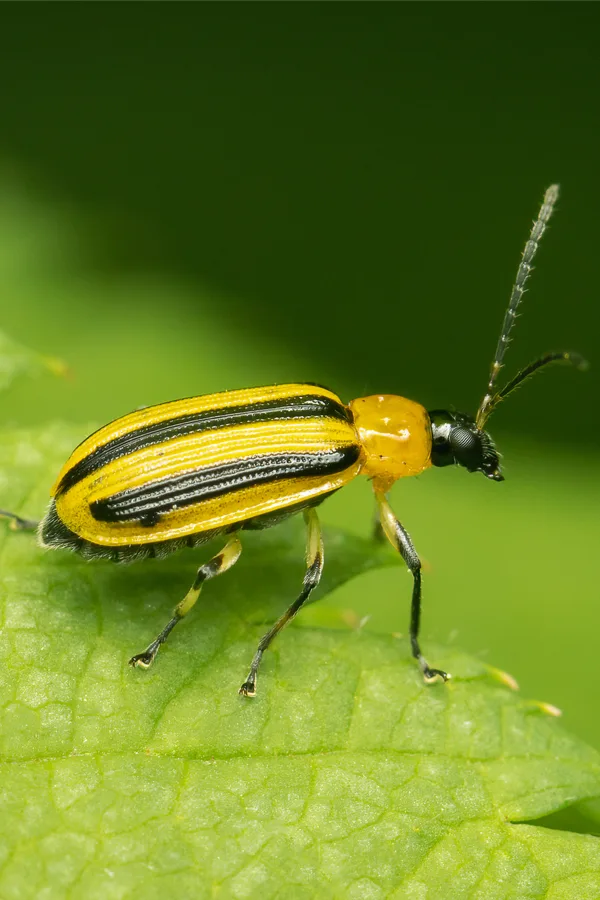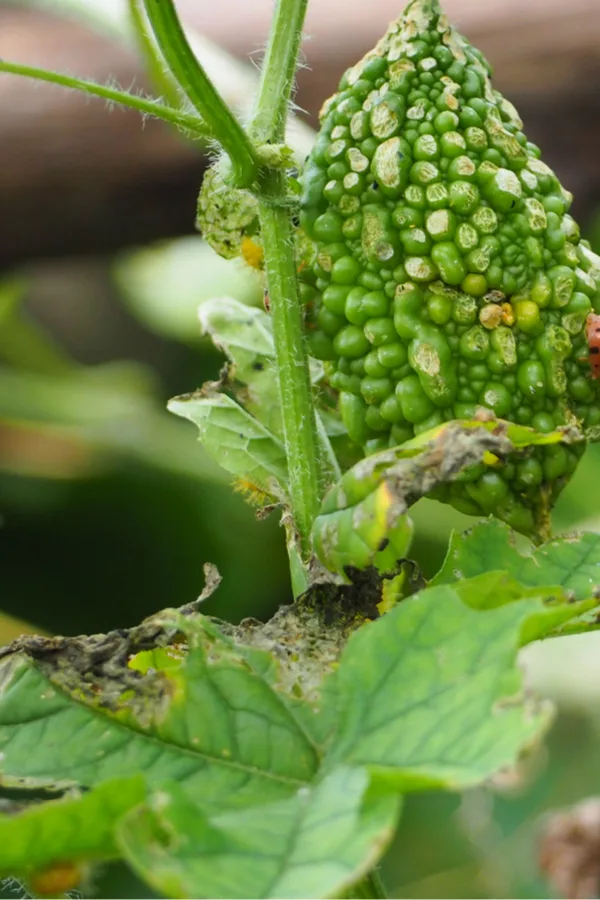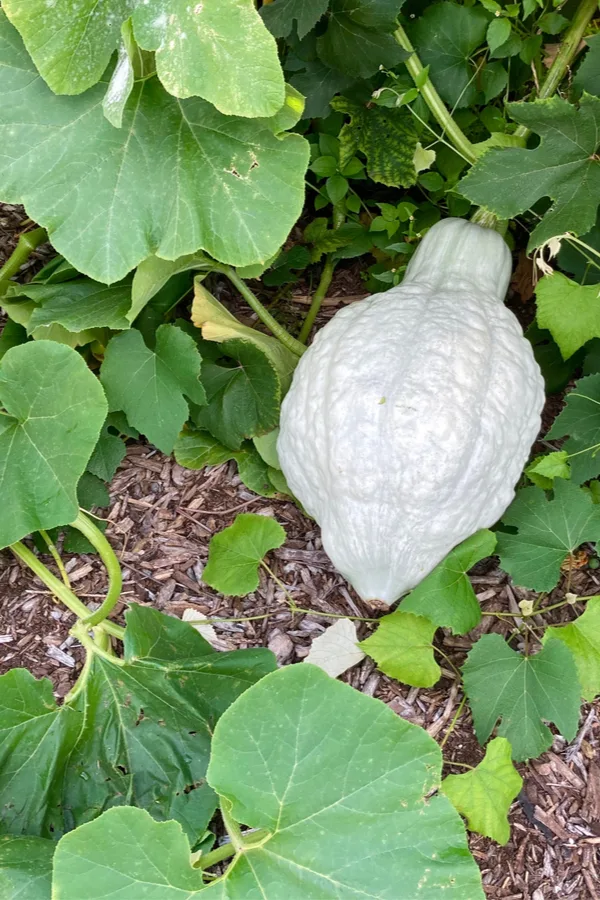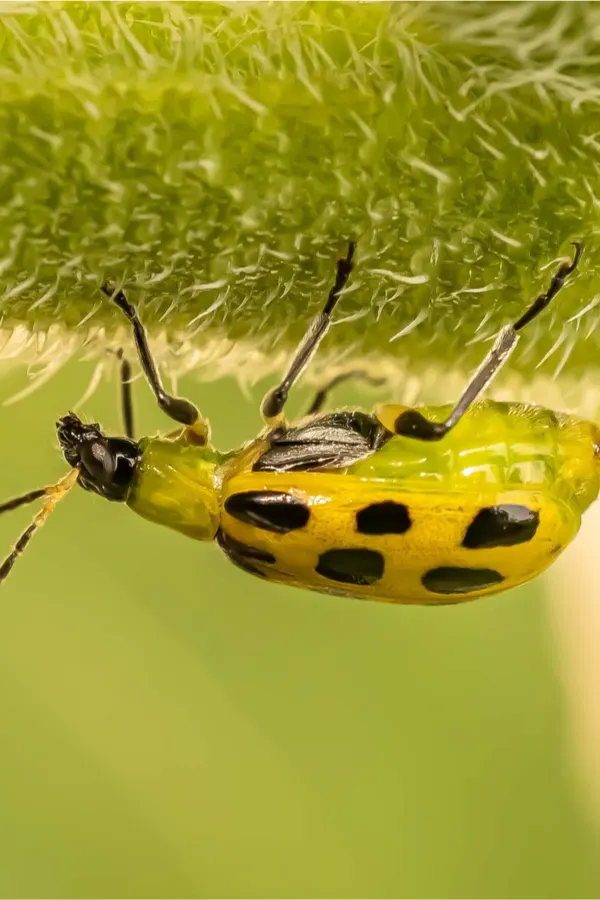Looking for a few simple and effective methods to protect your cucumber plants from the dreaded cucumber beetle?
The cucumber beetle is by far the most dangerous and destructive pest to cucumber plants. As you will see below, a single bite from a cucumber beetle can actually cause bacterial wilt. Unfortunately, that can spell the end of the line for an otherwise healthy cucumber plant.
But beyond wilt, cucumber beetles can decimate plants by eating the foliage, blooms and even in some cases, the fruit itself. And they don’t stop with just cucumbers, these voracious beetles also attack melons, pumpkins, zucchini and squash too!

What Is A Cucumber Beetle – How To Protect Plants From Cucumber Beetles
The most commonly found cucumber beetles are the black and yellow species. There are many variations of the black and yellow, including beetles with spots or stripes on their back. They are small in stature, somewhat resembling the body style of a ladybug without the fully raised, rounded shell.
The life cycle of the pest is quite interesting, and knowing when they appear and attack at each stage is a big part of winning the battle against them.
In late fall, adults overwinter in brush and debris. If garden plants are left up, it provides the perfect cover for them. Cucumber beetles begin to become active as the outside temperatures warm. In most climates, they start to appear in late May to early June.
At this point, the female beetles emerge to lay their eggs. And their favorite target? Right at the base of your cucumbers and other curcurbits growing in the garden. From there, the young larva feeds on the roots and small undersides of plants.
As the cucumber beetles mature, they continue to feed on more of the plant. A few beetles here and there are not usually enough to cause an issue. However, if left to multiply and their population grows to large numbers, they can quickly decimate plants.

As an added danger, cucumber beetles often carry and transmit bacterial wilt. When infected with this, a single chomp on a plant can infect the plant. Unfortunately, once a plant has the disease, it must be pulled up and destroyed to keep from spreading to other plants.
How To Protect Plants From Cucumber Beetles
There are several methods for getting rid of adult beetles. But the real key to success all starts with prevention.
For starters, clearing your garden every fall of all plant debris is critical. Without a place to overwinter, the beetles will look elsewhere to find a suitable home for winter. If you allow them to nest right in the garden, infestations are sure to follow!
Beyond that, covering your plants when the cucumber beetles first become active is another great way to prevent attacks. By covering plants with floating row covers or micro-thin netting, the adult females cannot lay their eggs at the plants base. (Product Link : Floating Row Covers)
Row covers need to be installed early in the season to be effective. They should be left in place until the end of June in most climates. By this point, the female beetles will have stopped laying their eggs into the soil and plants will be out of harms way.

If you have experienced heavy infestations in past years, you may want to even wait to plant your cucumber plants or seeds until late June or the first of July. There is still plenty of growing season left for plants to develop, but no new eggs can be laid near them by mid summer.
Protecting Plants From Adult Beetles – How To Protect Plants From Cucumber Beetles
Beyond prevention, there are several methods you can employ to keep adult cucumber beetles in check. The first of those is hand-picking, and it can be surprisingly effective.
By simply walking your growing rows daily and plucking any beetles off, you can usually keep damage to a minimum. Unfortunately, spraying insecticides at first sight is not best. It actually eliminates many of the beneficial insects along with the beetles it may kill.
Ladybugs, green lacewing and braconid wasps all feed on beetles. Killing these insects can pave the path for the beetles to come back with no natural predators or enemies. As you will see below, only serious infestations require an organic spraying solution.
Planting Trap Crops – How To Protect Plants From Cucumber Beetles
Another effective way to protect your plants from cucumber beetles is by planting a trap crop. A trap crop is a sacrificial plant that grows to attract the beetles away from your cucumbers, squash and zucchini.

Alyssum has long been known to be a great trap crop to grow to lure cucumber beetles. By planting it near your cucumber and other curcurbit plants, the beetles will visit the more attractive alyssum first, keeping your vegetable plants safe.
Many gardeners love to plant a sacrificial squash plant called Blue Hubbard. This fast growing plant produces edible squash, but more importantly, attracts cucumber beetles like crazy. Keep in mind you still need to hand pick or kill the beetles on the trap crop to keep them from spreading to your cucumbers. Product Link : Blue Hubbard Squash Seeds
Serious Infestations – How To Protect Plants From Cucumber Beetles
Sometimes, in spite of a gardener’s best efforts, the population of cucumber beetles can spike out of control. At that point, it may be necessary to use an organic spray to get them under control.
One of the best choices for this is neem oil. Neem oil is an all-natural, organic pesticide made by pressing the seeds of a neem tree. The resulting oil is highly effective at killing beetles and other pests. (Product Link : Pure Neem Oil)
Fortunately, it does spare pollinators such as bees, wasps and butterflies. It will, however, kill other beneficial insects, so only use for serious infestations. One good thing is that is extremely safe for pets and humans.

To apply, mix two teaspoons of neem oil with one gallon of water. In addition, you can add in a teaspoon of olive oil, which will help the mixture stick to the foliage of plants.
Spray the plants with the mixture, being sure to get the undersides of leaves where the beetles like to hang out. You may need to reapply in 7 to 10 days to completely control the beetles.
Here is to protecting your plants from cucumbers this year – and to harvesting a banner crop of fruit! Happy Gardening – Jim and Mary.
Jim and Mary Competti have been writing gardening, DIY and recipe articles and books for over 15 years from their 46 acre Ohio farm. The two are frequent speakers on all things gardening and love to travel in their spare time.
As always, feel free to email us at thefarm@owgarden.com with comments, questions, or to simply say hello! You can sign up for our free email list in the subscribe now box in the middle of this article. Follow us on Facebook here : OWG Facebook. This article may contain affiliate links.
